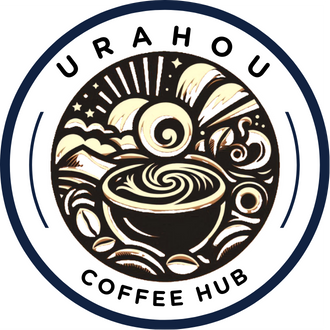Arabica vs. Robusta: The Two Giants of Coffee
Arabica and Robusta are the stars of the coffee world, each with a distinct claim to fame. Both belong to the Coffea genus in the Rubiaceae family, which includes over 500 genera and about 6,000 species. Despite the diversity, it’s Arabica and Robusta that dominate the global coffee trade, contributing significantly to the economies of many coffee-growing regions.
Arabica: The Smooth Operator
Arabica beans are widely considered to have sparked the global coffee phenomenon. Originating in the highlands of Ethiopia, these beans are now cultivated in hot, high-altitude regions worldwide, including Brazil, Colombia, and Indonesia. Known for their smooth, sweet flavor with fruity and chocolatey undertones, Arabica beans are favored in specialty cafes and gourmet coffee shops.
The genetic diversity of Arabica includes varieties like Bourbon and Typica, which contribute unique flavor profiles and aromas. Arabica plants are self-pollinating, which keeps their genes relatively stable, allowing for consistently high-quality flavors. However, they require nutrient-rich soils and specific climates, typically at elevations above 600 meters, making them challenging and costly to grow. This labor-intensive process and limited growing conditions result in a higher market price, reflecting Arabica’s value in the specialty market.
Robusta: The Bold Contender
On the other hand, Robusta coffee is the gritty go-getter. Native to sub-Saharan Africa, Robusta beans thrive in low-altitude, humid environments that would be unsuitable for Arabica. Leading producers include Vietnam, where robust, affordable coffee dominates both local and global markets, particularly in the instant coffee sector.
With a higher caffeine content than Arabica, Robusta beans have a stronger, more bitter, and grainy flavor that appeals to those who enjoy a bold coffee experience. This extra caffeine also makes Robusta naturally more resistant to pests and diseases, reinforcing its resilient reputation. However, unlike Arabica, Robusta plants require cross-pollination, adding a layer of cultivation complexity. Robusta’s hardy nature, easy-going cultivation, and abundant yields make it a budget-friendly choice, appealing for those who prioritize affordability and caffeine strength.
Flavor and Health Considerations
Arabica and Robusta differ noticeably in flavor. Arabica delivers a smooth, sweet experience with bright fruity or chocolaty notes, while Robusta packs an unapologetically bitter punch, often described as earthy, with hints of dark chocolate or even oatmeal. The distinct profiles offer something for everyone, with Arabica as the choice for complexity and Robusta for intensity.
In terms of chemistry, Arabica has a lower caffeine content (about 1.2–1.5%), which reduces its bitterness and makes it more approachable for those who prefer subtler flavors. Robusta, with its caffeine content of 2.2–2.7%, is both bitterer and more stimulating, making it ideal for a bold espresso shot. Moreover, Robusta beans are high in chlorogenic acids, and antioxidants with potential health benefits like anti-inflammatory properties and weight management support, though they contribute to Robusta’s characteristic bitterness.
Arabica, conversely, has higher levels of sugars and lipids, which contribute to its creamy, layered taste and rich body. These attributes make Arabica particularly desirable in pour-over and drip coffee, where its complex flavors can unfold fully without the intensity of Robusta’s caffeine jolt.
Choosing the Right Coffee: Arabica, Robusta, or a Blend?
With an expansive coffee aisle ahead, choosing between Arabica, Robusta, or their blends can feel overwhelming. Start by defining your flavor preferences: do you enjoy Arabica’s smooth, sweet complexity, or do you prefer Robusta’s bold and earthy kick, perfect for an intense espresso?
Budget also plays a role. Arabica’s higher price tag reflects the meticulous care required for its growth and harvesting, while Robusta’s easier cultivation process makes it a more wallet-friendly option.
Consider your preferred brewing method too. Arabica shines in pour-over or drip methods, where its nuanced flavors can develop, while Robusta adds depth and caffeine to espresso and instant coffee, where intensity is prized. Many coffee blends mix Arabica’s sweetness with Robusta’s strength, often in a 70:30 or 80:20 ratio, providing a balanced experience suited for a range of tastes and budgets.
Environmental and Ethical Considerations
For the environmentally conscious, it’s worth noting that Arabica’s specialized growing conditions make it more resource-intensive and sensitive to climate change, increasing its environmental footprint. Robusta, with its natural resilience, demands fewer resources, making it a more sustainable option in certain respects. However, coffee’s sustainability ultimately depends on responsible sourcing, so choosing coffee from ethical, fair-trade suppliers can help mitigate the impact of your coffee consumption.
The Final Sip
In the end, choosing between Arabica, Robusta, or a blend is all about understanding your taste and lifestyle preferences. Arabica offers an intricate, smoother sip for those seeking a gentler caffeine boost, while Robusta delivers robust flavor with a budget-friendly punch. A blend might be your best bet if you’re after a dynamic experience that balances Arabica’s complexity with Robusta’s intensity. The right choice is the one that aligns with your flavor goals, budget, and values.

